As the government’s levelling up agenda struggles to gain traction, a group of industry leaders share their thoughts on alternative approaches to regeneration
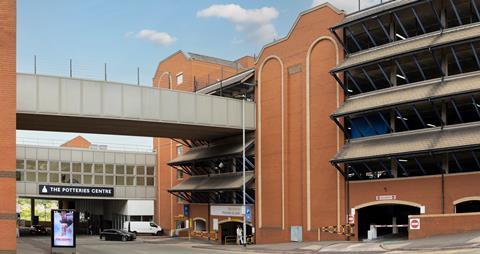
For much of the past century, developers and architects told communities up and down the country that if they wanted to reinvigorate their towns and boost growth, the first thing they needed to do was knock down the old streets and buildings and replace them with new ones. Bigger roads, multistorey carparks and shopping centres usually followed.
The often-disastrous results quickly became all too obvious to most ordinary citizens. Historic town centres, with their flexible fine grain of smaller, adaptable buildings, were gutted. Much-loved buildings were razed to the ground, independent retailers replaced by chains, and the distinctiveness and local pride that made places special were lost.
Widened roads and an emphasis on car use left many places choked by traffic and pollution. And while site consolidation made it easier for investors to buy and sell real estate, when shopping centres and big retailers started failing - as they have done over the last decade - this left behind a surplus of huge, often inflexible buildings, that no one was quite sure what to do with.
And yet the ability of developers and architects to seduce local politicians with seductive visions of shiny new-build ‘regeneration’ never really went away. Even as it became evident that dependence on the same old high street chains and developers was not sustainable, places across the UK seemed to become ever more desperate to find that quick-fix retail or office project that would ‘save’ their high street or CBD.
At a recent meeting, convened by RIBA and The Prince’s Foundation, in the Lancashire town of Fleetwood, figures from architecture, placemaking and property, came together to share lessons from the recent past, and to discuss how approaches to regeneration are changing. The meeting took place in the town’s former hospital, which is being repurposed as a multiuse community building.
What emerged was a positive story around the power of local engagement, the value of reusing existing buildings, and the need for local authorities and developers to start seeing our built environment from new perspectives. In particular, there was a focus on celebrating ordinary buildings that many developers, councils and consultants often regard as too challenging to reuse. This is what they said:
The Property Developer
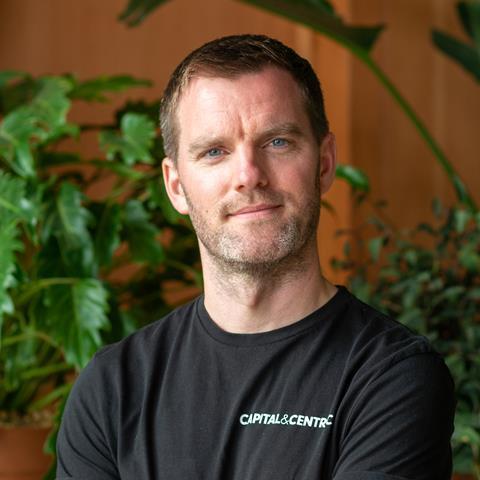
Tim Heatley is the founder of Capital & Centric, a Manchester-based property developer that specialises in the creative reuse of existing buildings. His company has repurposed a string of former warehouses and unloved structures across the north of England.
“We reuse buildings”, says Heatley. “Some are listed and some aren’t. Some are what we call ‘socially listed’ – you could knock it down but that’s not the best thing for the community or residents, because it’s still got a value to it.”
Capital & Centric is not the first high-profile Manchester property company to foreground reuse – Urban Splash did much to pave the way from the 1990s onwards – but Heatley has brought a new energy and purpose to the sector.
Notably, Heatley relishes the creative challenge in finding new uses for buildings where others can’t see the potential. “We know we’re on the right track when people say to us ‘I don’t think that’s going to work, I think that’s problematic, I think that’s going to be difficult’”, he says. “If we’re not pushing boundaries and we’re not ruffling feathers and upsetting some people, then we’re not trying hard enough.”
He believes that the best thing about an existing building is that it creates “boundaries and barriers” as to what the developer and architect can do. His view is that it’s these types of constraints that bring out the best in his team: “the really good creatives get great when they’re told what they can’t do.”
He attributes his company’s rapid growth over the last 15 years to an understanding of “the psychology of existing buildings”. In particular, he believes that buyers almost always prefer refurbished buildings to new builds. “Our consumer loves them”, he says. “They attribute real value to them – even building from the 60s and 70s.”
Heatley sees the appeal as lying in the history that even relatively recent buildings convey. “It tells them something about the past. Some of those warehouses and mills have survived two world wars”, he observes. “They’ve survived massive fires and they stand there as a testament to great construction and engineering and people really like that, and they’re prepared to pay a bit more for that as well.”
Capital & Centric seeks to work with the grain of existing buildings, rather than trying to impose a solution that requires awkward (and perhaps costly) remodelling. He describes the approach as about understanding “what you don’t need to do”. By keeping more of the existing fabric and “not fighting the building”, he believes an organic design solution is more likely to emerge.
The approach also helps turn challenging sites in economically deprived areas into more financially viable investments: “Don’t try and force against the will of a building. And don’t try and be overly clever. Just try and work with and it and work with the structure. That will save money and that will make things more viable.”
While the company has undertaken several high-profile projects in Sheffield, Liverpool and Manchester, it has also invested in very deprived locations where there are high levels of worklessness and very low values in terms of sales and rental values.
While quick to point out that he is not engaged in a charitable endeavour, it’s clear that his motivation goes far beyond maximising short-term profits. Heatley differs from some developers in taking a much longer-term approach to profitability. His company is sometimes prepared to accept a break-even outcome initially, but by retaining a stake in its properties, believes it achieves a good return on capital growth and rental yields over a longer period.
“We take a long term view about value”, he says. “If it means the value is equal to the cost at completion, we still do it because we tend to not smash and grab. We don’t build it and flog it and clear off. We tend to retain and keep it and look after it over a long period of time. Sometimes buildings and locations deserve that.”
The philosophy marks Capital & Centric out as longer term investor, with a stake in the on-going success of the place and wider communites in which it works. “We forget that sometimes it’s not just what’s the cost, it’s also what’s the value”, he says, in reference not just to the financial side of his work, but the architectural and social impact. “I think if you’re good at understanding what that additional value is and how to celebrate that, how to get that out, that helps.”
Discussing the recent media focus on the use of RAAC in schools and other public buildings, he expresses concern that it reinforces a belief that old buildings are best addressed with a bulldozer. “My concern is that loads more buildings are to be demolished that should really be kept and repurposed”, he says.
A common situation he describes is dealing with councils who have already decided they want to get rid of a building. “So many of our projects are where we’ve turned up and said to the council ‘Whoa, no don’t knock that down, we can work with that, we can reuse that’”. He says consultants are often to blame, telling councils to “just knock it down and start again, because it’s simpler”.
The firm does a lot of partnering with local authorities, where the council may own the asset or a nearby property. “A lot of the buildings are concrete buildings, so in the same way in the 70s we tore down loads of warehouses and mills, I think we’re currently tearing down lots of concrete buildings that one day we’ll look back on and regret losing, so I spend a lot of my time conserving concrete.”
He highlights the reluctance of some engineers to provide a warranty on older structures as a factor, and argues that the industry needs more training and skills focused on creative reuse. With more education, Heatley believes people can develop a better understanding that they can take old buildings and “do some brilliant things with them”.
He acknowledges that councils are often not best placed to regenerate their ageing estates, and asserts that this is where his company come in. “Often the council will say ‘this is a terrible building’. I don’t think there’s ever a bad building, I just think there’s bad management of the buildings”.
One of the first things he does when starting a new project is to get people into a building while it’s still derelict, “just to try and take people on a journey” to demonstrate what it could become. “I spend a lot of timing explaining to local authorities that it isn’t a bad building, and it’s not something they need to trash and demolish”, says Heatly. “You can deal with the problems, and you can make it look great. That’s the fear a lot of councils have – that it’s going to look terrible”.
He’s even encountered public sector partners who were unwilling to let him acquire old buildings unless he committed to demolishing them. “One of the first projects we did was owned by what was then Liverpool Development Agency”, he recalls. “When they heard we were acquiring a building from them and we weren’t going to demolish it, they were like ‘my god, you’ve got to demolish it, it’s horrendous, it’s embarrassing.’”
“It took a lot of persuading to convince them to let us keep the building, even though they’d had it sat empty doing nothing”, says Heatley. The project, called Bunker, is a conversion of a former Littlewoods catalogue store into office space. “I get it you know. Developers haven’t got the best reputation for doing nice things. But that one went on to win an RIBA award, and yet they wanted it to be demolished.”
The Prince’s Foundation

Sarah Robinson is an architect and the associate director (UK) for architecture and heritage at The Prince’s Foundation, which she describes as “a placemaking and education charity”. The charity’s projects include the refurbishment of New Cumnock’s town hall and swimming pool, as well as a key advisory role supporting the reuse of the former hospital in Fleetwood.
She is a strong advocate for the way in which reuse of ordinary buildings can help bring hope back to struggling communities, while addressing the green transition and building local economic capacity. But she acknowledges that architects’ reticence to work on basic refurbishment projects – typically seen as less glamorous – remains an obstacle to progress.
“I think as architects we need to probably step aside and think about the greater good”, says Robinson. Asserting that the way in which many architects still operate may be “holding us back”, she advocates for a new attitude. “You have to look past what the architecture looks like”, she argues. “We need to think about heritage in a different way. We have to think of heritage as everything that’s been given to us by the previous generation. We need to make use of that now because the default really shouldn’t be to build new.”
She says that often one of the first challenges faced when taking on an old building is a lack of as-built drawings, and usually poor information about services. This can require an initial upfront investment in surveys and measured drawings.
Referring to the former Fleetwood hospital building in which she’s sitting, she notes that “many buildings like this up and down the country need to find a new purpose”. But she highlights seed-funding as a critical hurdle such projects need to jump: “How do you find the money to reuse a building like this. Funding has been a great challenge.”
Alongside “lots of funding applications”, Robinson believes that “pragmatism is really key”. She argues for a new pragmatic approach to building control in order to facilitate a circular economy in materials. While seeking to reuse “everything we can” at Fleetwood, Robinson says that the project can’t necessarily afford sustainability consultants and material passports. “We have to do it in a more practical way”, she says.
One concern is that current approaches to regulation and building control make it difficult to reuse some materials. She believes that this is where more flexibility is required. “Door sets are something that’s really difficult to repurpose, because you can’t get them signed off by building control in a public building”, she says. “But actually, everyone wants us to reuse these materials, so what are we going to do about all of that. How do we reuse laminate, how do we reuse carpet?”
The project to reuse Fleetwood’s old hospital as a new community asset, has received a recent boost with a £1m grant from the Youth Investment Fund. This has enabled the community trust that’s leading on the project alongside The Prince’s Foundation to engage with young people in the area and get them to contribute to the design.
The desire to engage young people extends to working with local SME builders, who are being encouraged take on apprentices. “We’ve had local contractors working on this building being very aware that we get local people involved at every single point”, says Robinson. “Building education and capacity in the area is so important”.
Asked what inputs she’d like to see from local authorities, Robinsons says: “Speed, efficiency and engagement. If someone [within the local authority] is interested, that’s half the battle”.
The TV presenter

George Clarke is an architect and well-known TV presenter.
With almost two decades of experience in communicating the importance of architecture and reuse, Clarke is well acquainted with the challenges of repurposing existing buildings. He identifies one of the main issues as the regulatory and tax system.
“Everybody is passionate about the environment and regeneration, but the big question is around how we pay for these things. Where does that money come from?” asks Clarke. “I think in some ways we have an economic system that is not geared up properly for regeneration and reuse. And it certainly isn’t geared up to be as ecological and sustainable as we can be.”
Clarke describes the Paris Agreement, signed in 2015, as a significant moment in the UK’s green transition, but comparing it to the industrial revolution, notes that massive change will only happen at scale once the economic momentum is behind decarbonisation. “We can achieve that kind of revolutionary change again, but we need to make it economically viable”.
Highlighting the differences in VAT rates on new builds and refurbishment projects, Clarke argued that “When it comes to repurposing old buildings the tax system isn’t geared up to do what we need it to do”. He then points out that “You are paying VAT still on the repurposing of old buildings, but that doesn’t make any ecological sense whatsoever. So, you’re fighting an enormous battle because the numbers are stacked against you.”
He believes the UK needs to be “a bit more intelligent” about how it assesses buildings’ in terms of value and carbon costs. Using the example of Fleetwood hospital, where the meeting is taking place, Clarke argues that “If you analysed the embodied carbon of this building, it would be enormous. If there were financial incentives to be given for the amount of building material that you retain, this building would probably be refurbished already.”

Clarke believes we need to learn from our close neighbours in Europe. “You just have to look at Denmark”, he says. “ They started in the 1970s to make a massive transition . They didn’t do it just to be green – they did it to not be dependent on fossil fuels from other countries. They wanted to be energy independent. Now it just so happens that’s been to their benefit massively in making the green transition.”
He believes Denmark is punching above its weight when it comes to sustainable design because “from the very top of government, through the treasury, down to local government everyone is pushing in the same direction”.
“They have made a massive transition in that 50 years. And we’re absolutely miles behind on that”, he argues, before describing Rish Sunak’s recent deferral of some decarbonisation policies as “just ridiculous”.
Speaking from his own experience of working on refurbishment projects, Clarke argues for a more flexible and creative approach to regulation around reuse: “Every building is different. I’ve been involved in so many projects where you could really get bogged down in red tape and regulation.”
Calling for more engaged planners and building control officers, he says “If they’re just ticking off boxes then it makes the whole process bloody difficult. It’s amazing when you get a brilliant building control officer and a brilliant planner – in some ways it’s innovation from top to bottom. That’s what the system needs.”
The answer he believes, lies in more creative thinking: “You don’t have to be a creative to do that – just open minded.”
The Royal Academician

Elsie Owusu is an architect and Royal Academician Elect. She had first hand experience early in her career of working on the refurbishment of poorly maintained housing in south London.
Looking out of the window from the hospital in Fleetwood, Owusu says she’s reminded of her first job after leaving the Architectural Association (AA). “I worked in a really run down area in Peckham”, she recalls. “We had an architects’ collective and what we did was refurbish little terraced houses. And we did hundreds of them.”
Solon South-East Housing Association was a housing collective started by Robin and Jessica Sutcliffe, two AA students who had bought and refurbished a house on Solon Road, Brixton. The Solon collective movement grew rapidly with offices throughout the country, providing local homes and jobs for in-house architects, maintenance and construction teams. Owusu and the Sutcliffes were taught and mentored by AA tutor, Keith Critchlow, who was an advocate for grassroots housing initiatives.
Key to the success of the socially inspired enterprise was the engagement of what Owusu describes as “lots and lots of little mom and pop building companies”, that did the construction work. “You had the uncle and the 15 year old who’d just left school”, says Owusu. “It was a really thriving little community business.”
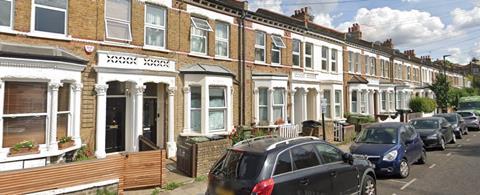
The collective went out into the community and began replicating the model to bring poor quality or derelict housing back into use. “We were providing jobs in the community”, says Owusu. “It just kick-started the regeneration”.
Arguing that such an approach could be utilised again in left behind communities, she says that it’s value is in the way that it builds local capacity and becomes a self-perpetuating activity. Referring to Fleetwood, she says “it would be great to start something like that here because once you do that, people just take it up and it works on its own – it’s like magic.”
The emergence of this type of grassroots activity in 1980s London coincided with growing scepticism around the top-down approach to social housing in the post-war period, as well as the emergence of a powerful conservation lobby. Much of the council housing that had been built in the 1960s and 70s was seen as poorly design and low quality, and had often involved the destruction and dispersement of established working class communities.
While the 1979 Thatcher government put an end to council house building for a generation, leading leftwing Labour politicians in the capital, such as Ken Livingston and Tony Banks, were amongst those already advocating for a different approach to the provision of social housing. One of the innovations that they advocated for was the more widespread refurbishment of existing 19th century housing stock for community use. The debates around how best to provide social housing at this time are a useful reminder that the idea of reuse is hardly a new one.
Owusu argues that such a ground-up approach can be initiated again today with limited capital, and can rapidly be scaled up as required. She also highlights the importance of focusing on small domestic buildings as an alternative approach to more conventional top-down and capital-intensive urban regeneration approaches.
As George Clarke observes of Owusu’s suggestion, this kind of entrepreneurial, small scale and community-based regeneration has the potential to “tick all the boxes” – from youth engagement, to education, housing, training and mentoring.
>> Also read: ‘Communicating the value of architecture’: why Muyiwa Oki wants to shift the debate on reuse
>> Also read: Simon Sturgis on the M&S decision: ‘In some ways it’s not even about retrofit’









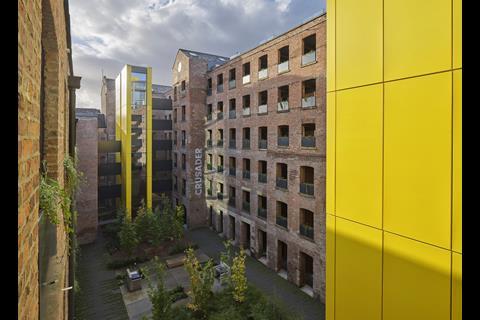
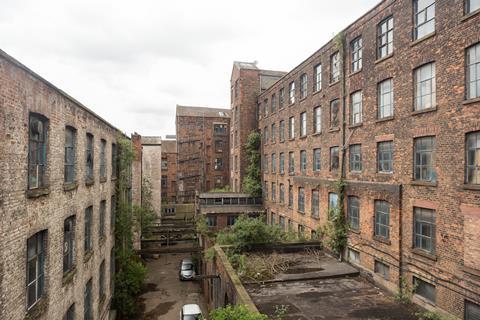





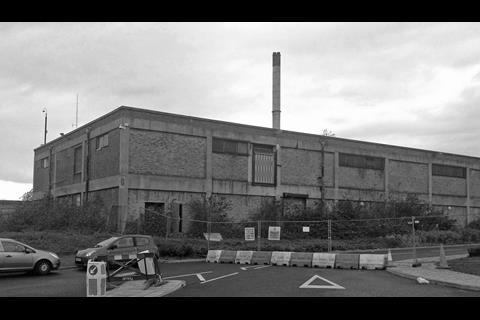





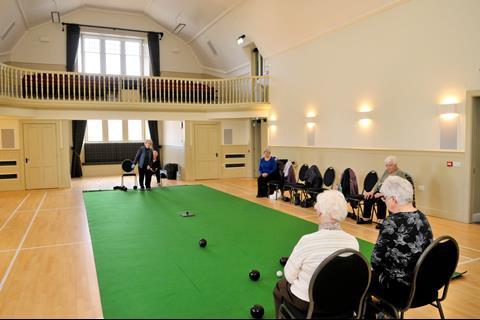









No comments yet